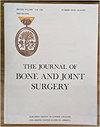Advancement and acceleration in medico-legal practice: what’s it all about?
1区 医学
Q1 Medicine
引用次数: 0
Abstract
In 2013 we ran a session entitled, ‘Pain, Percentages, Advancement/Acceleration and other nebulous concepts in medico-legal practice’ at the BOA Annual Congress in Birmingham. The session was vastly oversubscribed with people sitting/standing in the aisles and over 50 attendees locked out by the fire safety officer. Speakers included a barrister, psychiatrist, pain specialist and an orthopaedic surgeon. The level of interest in this session emphasised the topicality of the issues under review. As I continue to read medical reports in personal injury claims where it is argued that such and such an injury has caused the onset of certain symptoms and disability to be advanced/accelerated by a certain period, I thought that it might be worth re-visiting the subject to consider its validity in these cases. What do we mean by advancement or acceleration of symptoms? Effectively we are arguing that given the nature of the underlying condition (most commonly back pain), and our understanding of the epidemiology and pathophysiology of that condition, the injury or incident in question has brought forward what would invariably have happened in any event by a certain period of time. Clearly if a pedestrian is walking along the pavement and is struck by a car, it would be ridiculous to argue that this insult had brought forward the tibial fracture by a certain period. However, in a condition as common as back pain where most of the patients we see in clinical practice develop symptoms during the activities of daily living, rather than after a specific injury, it is frequently argued that such an injury or incident has triggered the onset of symptoms which would probably have come on at a later date in any event. Why do we introduce the concept? The simple answer is that we are trying to help the legal …医学法律实践的进步和加速:这一切都是关于什么?
2013年,我们在伯明翰举行的BOA年度大会上举办了一场题为“医学法律实践中的疼痛、百分比、进步/加速和其他模糊概念”的会议。会议座无虚席,过道里坐着或站着的人太多了,50多名与会者被消防安全官员锁在了门外。演讲者包括律师、精神病学家、疼痛专家和整形外科医生。对本届会议的关注程度突出了审查中的问题的时效性。当我继续阅读人身伤害索赔中的医疗报告时,有人认为这样或那样的伤害导致某些症状和残疾的发作提前/加速了一段时间,我认为可能值得重新审视这个问题,以考虑其在这些案件中的有效性。什么是症状的恶化或加速?实际上,我们认为,鉴于潜在疾病的性质(最常见的是背部疼痛),以及我们对该疾病的流行病学和病理生理学的理解,有问题的伤害或事件提前了在特定时期内任何事件都会发生的事情。很明显,如果一个行人在人行道上行走时被汽车撞了,那么认为这种侮辱使胫骨骨折提前了一定时间是荒谬的。然而,在像背痛这样常见的情况下,我们在临床实践中看到的大多数患者在日常生活活动中出现症状,而不是在特定的伤害之后,人们经常认为这种伤害或事件触发了症状的发作,而这些症状在任何情况下都可能在晚些时候出现。我们为什么要引入这个概念?简单的回答是,我们正在努力帮助法律……
本文章由计算机程序翻译,如有差异,请以英文原文为准。
求助全文
约1分钟内获得全文
求助全文

 求助内容:
求助内容: 应助结果提醒方式:
应助结果提醒方式:


